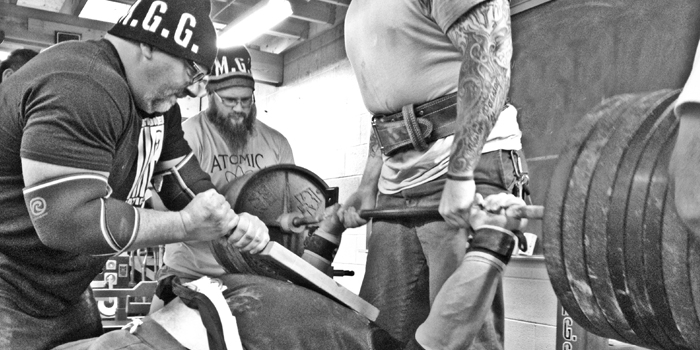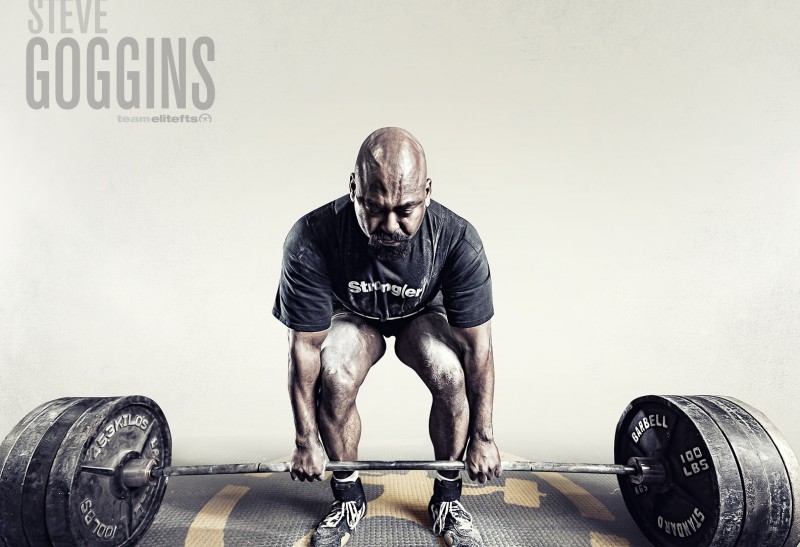
The holiday season is a great time to catch up with family and friends, recharge your life-energy, and take some time to pause and reflect on the prior year. For me, this is also a time to be able to catch up on a little reading. As the year moves quickly I find myself, as might you, reading the headlines of the New York Times on my app and realizing I don’t have the time to fully read the article. When this happens I save it for when I have a few extra minutes. Follow me down this path. It will lead to the gym, I promise.
Over this winter break and holiday season, I looked back over the articles I saved and played some catch-up. By far my favorite article was a New York Times article titled, "Glowing Auras and ‘Black Money’: The Pentagon’s Mysterious U.F.O. Program." Here is the link if you are a science and alien geek like I am.
The short version of the story, for those in a hurry, is that the Pentagon was secretly funding a program called, “The Advanced Aerospace Threat Identification Program.” The program investigated reports of unidentified flying objects, (not that dissimilar from Project Blue Book which ran from 1952 to 1970) and this now widely-read article included previously unreleased cockpit video footage of a Navy F/A-18 Super Hornet’s encounter with an unknown object. The article also detailed the work of Robert Bigelow and his company Bigelow Aerospace. The story goes into how Bigelow’s Las Vegas company, which is the current storage area for metal alloys and other materials recovered from what officials call "unidentified aerial phenomena." This is a rabbit hole for another time.
RECENT: The Strongest Man in the Gym
Anyway, the story was interesting, to say the least — and great for those alien believers out there. But it was also one of those stories that gets you clicking link after link after link. You know what I am talking about: when you find an interesting video on YouTube, then one video leads to the next and the next. Then suddenly you realize that over an hour has passed and you are not even sure how you progressed from the initial video that started this process to the seemingly unrelated video you ended up on. Anyway, this New York Times article on the UFO’s, the Pentagon, and the Department of Defense got me clicking, as I now had Area 51 and little green men on my brain.
The article I landed on after a number of clicks from this original New York Times link was, as all tangential clicks are, somewhat related, but with a slightly different bend to it. The article I now found myself engaged in was the Fermi Paradox.
Let me start with Fermi. Enrico Fermi was a physicist, but not just any physicist. He was the physicist who in part created the world’s first nuclear reactor. He was also a Nobel Prize winner in physics and he was one of the original big brains behind quantum theory and particle physics. Enrico Fermi, who died in 1954, has his name stated often to this day as many things science and physics bear his name, including world-known Fermilab, a particle accelerator. Point being, Fermi was an incredible mind who, in addition to his work on the Manhattan Project, also asked the question, "where is everybody?” This led to the Fermi Paradox, which examines the highly mathematical probability of the existence of non-Earth civilizations versus the massive lack of evidence of such existence.
This is where the alien story from the New York Times piece converges with Fermi. With regard to the Fermi Paradox and his question, Fermi, speaking of alien life, looked at what he knew about the universe. Being physics and mathematically minded, Fermi understood the highly mathematical probability of the existence of non-Earth civilizations and juxtaposed that with the massive lack of any tangible evidence of such existence. He knew that the universe was made up of hundreds of billions of galaxies like ours, the Milky Way galaxy. There are some 400 billion stars alone in our Milky Way galaxy. Fermi knew mathematically that if “merely” 20 billion of those 400 billion stars in our galaxy were similar in size and type to our star, the sun, and if merely 20% of the exoplanets (scientists have already discovered over 2,300 confirmed exoplanets) in our Milky Way galaxy are in the Goldilocks Zone (the zone with conditions ripe for water thus life due to their proximity to a sun-like star) and if a mere 1.1% of those exoplanets had life, Fermi knew that would mean at minimum, mathematically there should be over one million planets with life on them in our galaxy alone. Knowing this lead Enrico Fermi to ask the question based on these nearly mind-blowing numbers and highly probable life estimates, “where is everybody?” Meaning where is all the life, AKA where are the aliens?
Well, the more I read about Enrico Fermi, the more I realized that Fermi was the kind of guy that would not simply ask a question, but try to answer that question. So he set out to do just that. The Fermi Paradox has a load of moving parts to it, but the part of the theory that really caught my attention and that is germane to this article is that in order for a life form to be able to travel to other worlds, it must be very advanced and very intelligent. It must have the mental ability, the physical ability, the drive, and determination to develop the technology to travel to other worlds over these mind-boggling distances.
MORE: Top Training Tips For Advanced Lifters — Life Priority and Team Role
One of Fermi’s theories as to why we are not being bombarded with signs of life from other planets is that it could very well be the case that the ability to develop that remarkable technology to travel to other worlds is also the very downfall of that species' existence. That this ability, which serves as a civilization's greatest strength, could be, as is often the case, its greatest weakness. In other words, developing technology is one thing, but harnessing that technology for an ultimate good, space exploration, for example, might be difficult if not impossible. Fermi theorized that the same intelligence, drive, and determination needed for the development of the highest of technology could be the very same traits that cause the end of a civilization before that civilization could truly learn to hone and properly use that given technology.
The point Fermi was contemplating was that the requisite tools it takes to get to this point of technological space exploration take on a life of their own until that civilization develops the appropriate philosophical, moral, and ethical symmetry required to aim its technological prowess in the direction of what is good, just, positive, and beneficial. He postulated that it is likely that, prior to the species developing the morality and philosophy to use that technology for a peaceful pursuit of exploration, its more primitive self would have already misused a more primitive version of that technology to its own demise, thus never reaching that critical mass of development for the greater good. Are you following me so far? It is a little like our own civilization. As a civilization, we developed the technology to split the atom, but for all of the positive intentions for utilization of that power, we as a civilization have amassed 14,900 nuclear warheads worldwide, all pointed at one another.
Who knows how our brains work, or in this case how my brain works. But as I read these thoughts of Enrico Fermi’s—that the same tools required for creating something amazing are often those same tools that destroy that same amazing creation—my mind connected this to a subject matter that is a staple of yours and my life.
As I was digesting all of this information, I reflected back to something I saw on one of the elitefts videos, and this is where this all ties into powerlifting. It was either Dave Tate personally talking or Dave referring to what Meadows or Dugdale said, (I can’t recall exactly, as I follow a good deal from each of these three experienced athletes), but the statement from one of his seminars was (paraphrased) as follows: “Once a lifter reaches an elite level, they have about a seven-year window of time before the wheels come off.” In other words, there is this tremendous amount of work that a powerlifter or bodybuilder or strongman competitor puts into his sport. There is grueling training, day after day, month after month, year after year in the gym. But it is that training that, if combined with a set of essential tools (drive, focus, insight, perseverance, will-power, never relenting mentality, to name a few) can help a lifter achieve an elite level of performance while competing. Upon reaching that level, there is approximately a seven-year window for them to really excel and take advantage of this level of strength, power, or size they have developed. So, it takes practically a lifetime in the weight room just getting to this elite level, then a seven-year stretch at that top level, in which during that time the athlete works to achieve all they can while in that zone of power, strength, size, health, and know-how.
Two things are really important takeaways from the message of that clip. One is the sheer amount of hard, hard individual work it takes just to reach that window of time to take advantage of one’s elite level. The other is the fact that 90% of the lifters never reach that elite level in the first place. This second part, that 10% who actually do become elite in their field, made my mind circle back to Fermi and his take on civilizations that never make it to the point of being able to utilize their technology for exploration of space, as they destroy themselves before they even get there. These three seemingly non-related concepts (the New York Times article, the Fermi Paradox and the concept about the seven-year window as an elite strength athlete) absolutely intersect. It is this intersection that I have seen play out for decades, as you have or as you will see in our strength world time and again, whether you are consciously aware of it or not. These are lifters who have the tools to aspire to greatness but fall prey to those tools, which serve to destroy that lifter as they are climbing that ladder toward success.
So there are a few categories here:
- The primary herd of lifters who toil away, training at the gym, but who never quite achieve an elite total.
- Those lifters from the herd who toil away, training at the gym, who actually achieve that elite level but never get deep into that seven-year zone of being on the top of their game. These are the Fermi Paradox of lifters.
- Those rarer-than-rare lifters from the herd who toil away, training at the gym, who hit that elite status, but then manage to stay at the tip top of their power game for nearly a decade (that seven-year period) racking up wins, records, and personal accolades. They, in essence, add length and significance to their own chapter of the book that is the history of their sport.
The Fermi Paradox is, in essence, the elite powerlifters’ paradox, in that the required tools to make it to the destination you are striving for are the same tools, when not honed, not respected, not cherished, not matured, not well thought-out, and not carefully calculated, that can absolutely destroy the lifter before they reach their fullest potential and sustain that full potential for the seven-or-so year duration. It is that unbridled drive for success that helps a lifter reach an elite status, but it can be that same drive that, when not used responsibly or with meticulous wisdom, destroys the same lifter it has served to create.
That unchecked drive, when the lifter becomes injured, causes the lifter to ignore the warning signs ahead and, instead of working around an injury, listens not to common sense but rather to that inner drive. And thus the lifter plows straight ahead past the clear warning signs into a full blown serious injury requiring a surgical repair. After a successful surgery, as that lifter heals, that required drive to succeed can also derail the healing and rehab. When that internal drive pushes past the plan for recovery—when that drive overrides the rehab protocol and the duration required for biological healing to occur—a repaired injury that has been pushed too hard, too fast re-ruptures and the promising lifting, bodybuilding, or strongman career is over before it even reached its full potential, never to reach that seven years of dominance.
What is it that helps constitute a legendary powerlifter like Ed Coan ("the GOAT” who dominated powerlifting for decades), a bodybuilder like a Robby Robinson (“The Black Prince” who is still in competition shape at 70 years of age), or Žydrūnas Savickas (who has been an unstoppable force in the world of strongman for some three decades)? What is the commonality with athletes who had the tools (work ethic, love of sport, drive, consistency, diligence, intelligence, etc.), to aspire to the highest level, achieved that elite level, but then manage to maintain that level and dominate even beyond the seven years, stretching out their dominance for decades? Perhaps the better question is, "What are the commonalities between the elite powerlifters, bodybuilders, and strongmen who are like shooting stars, here today, gone the same day?" How has legendary powerlifter Steve Goggins managed to pull over 800 pounds for nearly three decades? How does a top level bodybuilder like Dexter Jackson at nearly 50 years of age continue to land in the top three in the Mr. Olympia when guys half his age reach the Olympia level but can’t hold onto it and fade away into obscurity even before they become known?
And of most importance, where are you in these categories? Are you a member of the primary herd of lifters who toils away, training at the gym, still striving hard to reach an elite level? Are you perhaps one of those lifters from the herd who toils away, training at the gym, who has achieved that elite level, but has not begun the seven-year journey of dominance due to injury after injury? Or perhaps you are one of those rarer-than-rare lifters from the herd who has toiled away, training at the gym, who has aspired successfully to that elite status, but is still managing to stay at the tip top of the power game for nearly a decade, racking up wins, records, personal accolades, and adding length and significance to their own chapter of the book that is the history of their sport?
Synthesizing all of these themes together and reflecting back on them as we start a new year, 2018, I surely don’t know if aliens or intelligent life have visited our planet, and I also don’t know the correct solution to the Fermi Paradox. What I do know, having had a couple of decades of skin in the powerlifting game, is that one's competitive time “under the bar” is a sacred time. That time when a lifter is a the top of their game is a delicate balancing act between utilizing the tools that got them to an elite status and backing down from those tools at appropriate times so as not to tip the scales from continued success to prematurely landing at the expiration date for one's top-level competitive pursuits.
Make no mistake about it; every single elite level powerlifter who is walking this good earth has an expiration date, no different than the expiration date of your simple gallon of milk in the fridge. Keeping that expiration date from arriving sooner than it is supposed to is something that requires insight, reflection, thought, planning, and being totally honest with oneself. As we have closed the chapter on 2017 and we have entered this new chapter of 2018, now is absolutely a time to reflect and really take an honest look at your lifting. If you have not yet achieved your elite total, are you on the right path? Are you making progress toward that end? Or are you content to remain a part of that larger 90% of the herd? If you have hit your elite totals and are firing on all cylinders, are you finding that balance between training aggressively and training wisely so you can relish in those suggested seven years of competition at the very top of your game? If you are in that pocket of being at your best and are, one by one, checking the boxes of the things you want to achieve as a powerlifter, are you working to go beyond that seven years and into that time span like the great Ed Coan, who put up huge numbers for decades?
If you have the tools that can launch you into the direction of your elite status, are you calculating and methodical with these tools so they work for you and not against you? This is a new year, and with it comes an opportunity for you to examine your own Fermi Paradox of powerlifting — an opportunity to determine what you can do, are willing to do, need to do, in order to become the best powerlifting, bodybuilding, or strongman version of yourself. But more importantly than just reaching your personal pinnacle of power is staying at your zenith of power by being ever cognizant of the paradox and not destroying yourself in the process.
Wishing you the very best in 2018!
Image credit: Vadim Sadovski © 123RF.com














Come for the strength training articles and also learn about topics such as philosophy, physics and psychology.
This world is completely new to me, as I merely started to get into this kind of training December '17, but digesting all the content and training in the gym is a lot of fun.